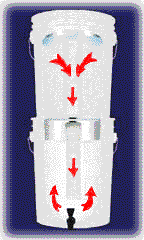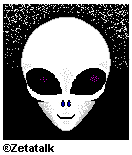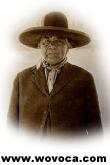|
||||||||||||||||||
Press CTRL+D to bookmark this page! |
||||||||||||||||||
 |
||||||||||||||||||
| Click here for
EarthMotherCrying Wallpaper |
||||||||||||||||||
Afterlife Myths of the East |
||||||||||||||||||
|
||||||||||||||||||
|
||||||||||||||||||
|
|
||||||||||||||||||
|
||||||||||||||||||
|
||||||||||||||||||
|
||||||||||||||||||
|
||||||||||||||||||
Afterlife Myths of the East
African Traditional Religion: Dahomey Song They that are born are destined to die; and the dead to be brought to life again; and the living to be judged, to know, to make known, and to be made conscious that He is God, He the Maker, He the Creator, He the Discerner, He the Judge, He the Witness, He the Complainant; He it is that will in future judge, blessed be He, with whom there is no unrighteousness, nor forgetfulness, nor respect of persons, nor taking of bribes. Know also that everything is according to reckoning; and let not your imagination give you hope that the grave will be a place of refuge for you. For perforce you were formed, and perforce you were born, and perforce you live, and perforce you will die, and perforce you will in the future have to give account and reckoning before the King of kings, the Holy One, blessed be He.
Australian AboriginalAustralian Aboriginal "Dream Time" represents the home of the Gods, psychic messages, spirits and ancestors; it is a place where time and space have little meaning. Many Aborigines still live their lives according to rules handed down for millennia through story and song. There is also a strong sense of spiritual feeling attached to many of the decisions made by aborigines. They base their lives on intuitive hunches and the ability to empathize with the emotions and actions of others, even at a distance. Mythology tells of whole tribes responding to an inner call to move out of danger to another place. They have harnessed the powers that we may all possess at some level, but which modern Western society has driven down into the deep recesses of the mind. We have become conditioned to assume that communing with spirits and sensing the oneness of all things is superstitious nonsense. Yet as a result we have lost touch with basic survival skills that may once have kept us alive in a hostile environment. Early students of aboriginal legend discovered the belief that the dead were "taken to the sky" and eventually brought to Earth again. Those who were returned would do so in a trance, bemused by the mourning of their friends and relatives who thought them dead. They would be treated with reverence, and many became shamans. Whether these were legends of survival or examples of near death experiences, one can appreciate the impact they made on aboriginal culture and the importance placed upon the view that we do have spirit and that it survives bodily extinction.
Buddhist (Tibetan)Everyone has returned from death. Many persons do no believe this because they cannot remember it, yet although they have no memory of their birth, they do not doubt that they were born. The supreme goal is to be born no more. This can be accomplished when one understands that the world is an illusion, a mental construct. This knowledge, plus a willingness to understand that the self is likewise an illusion, liberates one to merge with the Universal Mind, the divine mind of Buddha, in the state of enlightenment known as Nirvana. At the moment of death, the deceased enters the Bardo state, the afterdeath plane, lasting about 49 days between death and rebirth. The Bardo has three stages: the Chikhai Bardo, the Chonyid Bardo, and the Sidpa Bardo. The Chikhai Bardo begins at the moment of death, when the deceased has a supreme vision of the liberating Truth. But the dead person, unless trained in yoga or meditation, will not be able to remain in this transcendental state. Only those who have come close to negating the self can seize this opportunity to enter Nirvana. The great majority pass through the brilliantly intense divine light, unwilling to be absorbed into it. In this Bardo the deceased person may remain several days in a trancelike state, unaware that s/he has separated from the physical body. In the second state, the Chonyid Bardo, the deceased encounters the dreamlike state of karmic illusion. (Karma is the psychic residue of our previous existence.) Thought forms generated by the deceased person’s own mental content take on terrifying reality. The deceased involuntarily fabricates encounters with good and evil powers, peaceful and angry deities. Buddhas (enlightened ones) and Bodhisattvas (semidivine beings who have deferred their own Nirvanic state in order to help others achieve it) appear majestic and awesome. Their radiance will cause the impure deceased person to shrink back so as to preserve his/her insignificant selfhood. Many lights and colors will bewilder the dead person. Evil karma may produce thought forms of flesh-eating demons making a frightful tumult, competing with each other to seize the deceased. In this Bardo, the deceased will experience a vision of judgment and punishment. Dharma-Raja, King of the Dead, holds a balance scale on which are placed black pebbles (evil deeds) and white pebbles (good deeds) to be weighed. Supervising the weighing is the monkey-headed god Shinje. Also present is a jury of Gods, some with animal heads, some with human heads. Dharma-Raja holds up the Mirror of Karma, in which the naked deceased person in reflected. Devils await to conduct evildoers to the hell-world of purgation. None of these deities or demons have any real existence; they are thought forms. If the deceased could realize this, s/he would enter the Nirvanic state. In the third stage, the Sidpa Bardo, the deceased descends into the ultimate degradation of a new physical birth, having been unable to profit from experiencing the two previous Bardo states. Although the deceased might have taken rebirth in a nonhuman world or one of the Paradise realms, human life along generates the karma that makes it possible to end the rebirth cycle. [The Tibetan Book of the Dead: The Great Liberation Through Hearing in the Bardo by Guru Rinpoche, et al]
CelticLittle is known about the religious beliefs of the Celts of Gaul. They believed in a life after death, evidenced by the burial of food, weapons, and ornaments with the dead. The Druids, the early Celtic priesthood, taught the doctrine of transmigration of souls and discussed the nature and power of the Gods. The Irish believed in an "otherworld," imagined sometimes as underground and sometimes as islands in the sea. The otherworld was variously called "the Land of the Living," "Delightful Plain," and "Land of the Young" and was believed to be a country where there was no sickness, old age, or death, where happiness lasted forever, and a hundred years was as one day. It was similar to the Elysium of the Greeks and may have belonged to ancient Indo-European tradition.
Christian[Disclaimer: Christian afterlife beliefs have never been precisely formulated. Doctrines accepted at various times and by different denominations allow wide variation in imagery and content. Probably at no time were all the elements here described accepted universally or uniformly interpreted.] When a person dies, the physical body is separated from the soul, and the soul must be judged to be in a state of grace or a state of sin. This is the Immediate Judgment, which determines where the person will spend eternity. If the soul is in a state of grace, it goes to Heaven to await the Last Judgment. heaven, the abode of the Christian God, is located beyond the skies. Here, amid choirs of angels, blissful souls enter gates of pearl and walk golden streets. However, condemned souls await the Last Judgment in Hell, located in the Earth’s center or, on a vaster scale, beneath the visible cosmos. Here the leader of the fallen angels, Satan, dwells in exile from heaven, flapping vast bat wings. (Occasionally, he visits Earth to attempt to seduce humankind in defiance of his former God.) Hell is a pit of visible darkness where the damned are punished in fiery heat or intense cold. They may be lashed by horned demons, rolled over sharp stones, etc. Above all, they suffer the worm of conscience, which reminds them incessantly how easily in life they might have earned the eternal bliss of God’s presence. In a special compartment of Hell called Limbo, the souls of unbaptized children and morally righteous people who lived before Christ’s coming are confined, not in torment, but forever excluded from bliss. In a variation, some souls, probably the vast majority, who die in a state of grace but with some taint of sin as yet unpaid for, will be sentenced to a term in Purgatory, a place or state in which the soul can be purified until it is ready to dwell with God. In Purgatory, suffering is intense; souls are deprived of God’s presence and suffer the sensations of physical tortures. [Note: Indulgences, which can be gained through special prayers uttered either by the person before death (they can be stored up) or by people praying for the deceased can mitigate the taint of sin that sends souls to Purgatory. During the Middle Ages/Renaissance period in Europe, these indulgences could be bought for money from traveling priests, confessors, ministers, etc.] On the day of the Last Judgment, four angels standing at Earth’s four corners will sound trumpets to initiate cataclysmic events. Christ (the son of the God) will descend from Heaven in triumph to judge all people and nations in the presence of one another. In many versions, only Christians will share in the reign over Earth.
EgyptianThe God Atum, or Ra, Lord of the Universe, was the first of a divine line that produced two couples: Osiris and Isis, and Seth and Nephthys. Isis and her brother-husband ruled Egypt during a golden age, taking humanity under their protection. Seth, their brother, married to their sister Nephthys, became insanely jealous of Osiris and sought to destroy him. He lured Osiris into an open coffin, nailed it shut, and cast it into the Nile. Distraught, Isis searched everywhere for the coffin, finally finding it hidden in a sycamore tree in Phoenicia. When she returned with the coffin to Egypt, Seth seized the body of Osiris, cut it up into 14 pieces, and scattered the fragments. Isis, however, found them and, with the help of Anubis, the jackal God, put them back together, thus creating the first mummy. Osiris’s posthumous son, Horus, was hidden from Seth by Isis. After he grew up, he avenged the death of his father by emasculating Seth but lost an eye in the struggle. Thoth, the ibis-headed God of wisdom and writing, intervened to heal both opponents, who were then summoned before a tribunal of Gods to determine their guilt or innocence. The deities found Horus in the right and ordered Seth to return his eye. Horus gave the eye to Osiris, who was then magically restored to life. Osiris, the first being to undergo death and resurrection, bequeathed the crown of Egypt to Horus and retired to the underworld, Amenthe, to rule over the dead. Spirits of the dead, who have been mummified after the example of Osiris, also may live eternally beyond the grave of Amenthe. The entrance lies in the extreme west beyond the sea where the sun descends over the earth. Before arriving at Amenthe, the soul must successfully complete a perilous journey. The Book of the Dead, which relatives leave in the tomb along with food and other necessities, will guide the soul and ward off evil. With its help the deceased may elude demons and monstrous monkeys that lie in wait with nets to catch traveling souls. The dead must cross snake-infested plains and a body of water stretching to Amenthe. To reach Amenthe she must ask the taciturn ferryman Face-Behind (so called because he always faces backwards) to row her across the water. At Amenthe’s gate sits a hybrid monster, part crocodile, part lion, part hippopotamus, who warns that he will tear out the heart of sinful travelers. Inside the gates, the soul wanders through magnificent halls until it comes to a place where there are 42 assessors, who initially hear its case. To them the soul must make the Declaration of Innocence, saying, "I have not blasphemed, I have not killed a human, I have not robed, I am pure," etc. Then comes the awesome final trial in the Hall of the Two Truths (approving and condemning) before Osiris and a tribunal of deities. Here three deities, Horus, Anubis, and Thoth, supervise the weighing of the heart of the deceased on a scale balanced against a feather, symbol of Maat, Goddess of truth. Anubis adjusts the balance carefully while Thoth, inventor of writing, sits ready to record the result. If the heart and Maat exactly balance, it proves the sincerity of the dead person’s Declaration of Innocence. Thoth’s report is then given to the divine tribunal, and the deceased advances to the throne of Osiris to receive the verdict and sentence. If the soul is condemned, it is either scourged back to earth to be reincarnated as a vile animal or plunged into the tortures of fire and devils. Alternatively, it might be driven up into the atmosphere to be tossed by violent storms until its sins are expiated. The ruler of this zone is Pooh, overseer of souls in penance. After their purgation in this region, the souls are granted probation through another life in human form. The blessed soul lives eternally with the Gods in Amenthe, where it may encounter its parents, offspring, friends, and lovers. The blessed hunts and fishes, plows and sows, reaps and gathers in the Field of the Sun on the banks of the Heavenly Nile. She will receive her reward in inexhaustible crops of beans and wheat, with bread from divine granaries and figs and grapes to eat. Much of our knowledge of the Egyptian philosophy of death and the afterlife is derived from The Egyptian Book of the Dead.
Ancient GreekHades, son of Cronus and brother of Zeus, was given Hades, the land of the dead as his inheritance. he was notorious for having abducted Persephone, daughter or Demeter, Goddess of agriculture. As Persephone gathered flowers in a field, he carried her away in his chariot to be queen of his underground realm. Her distraught mother had to accept the Gods’ edict that Persephone would be returned to her for only half the year. It is summer when Persephone is with her mother; winter is when she rules in Hades. When the Fates fix the hour of a person’s death, red-robed infernal deities (called dogs of Hades) seize the dying mortal, deliver her a decisive blow, and carry her to the land of shadows. Entrances to the underworld are to be found in certain caverns and subterranean watercourses. The shade, or ghost, wanders across a bleak region of black poplars called the Grove of Persephone until it reaches the gate of the Kingdom of Hades. Here it encounters Cerberus, the three-headed watchdog, whose mouth dribbles black venom. The terrible beast will wag its tail and ears if appeased by honey cakes, and then the shade will be permitted to proceed. Now the shade must cross Acheron, one of the five underground rivers. (The other four are Cocytus, Lethe, Phlegethon, and Styx.) Souls are taken to and fro over the river by old Charon, the official ferryman, who demands an obol (a small coin) for this service. If the dead person has not been buried with an obol in her mouth, Charon will pitilessly drive her away. She will have to wander the deserted shore and never find refuge. After crossing the river, the soul is handed over to a tribunal in order to be assigned to an eternal home. This tribunal consists of Hades and his three assessors, Aeacus, Minos, and Rhadamanthus, all sons of Zeus and highly qualified judges. The tribunal examines the soul and assigns it to the type of afterlife it deserves. If the soul is of the ordinary sort, it remains in a neutral region of Hades reserve for people who deserve neither reward nor punishment. This is a dull, drab place where the sun never shines, and few things grow other than asphodel, a plant that thrives in ruins and cemeteries. Here the shade wanders joylessly among the shadows, a pale reflection of its former self. Many such souls go to the river Acheron, mount whatever conveyances they can get, and travel to the Acherusian Lake. Here they dwell and are purified of any evil deeds in order that they may receive the reward of good deeds according to what they deserve. If the dead person has committed a great crime, it will be cast into Tartarus, a somber place with gates of bronze, surrounded by a triple wall, situated on the river Phlegethon. Here are held the rebel Titans, Gods who warred with Zeus. Here Tantalus, who killed his son and served him to the Gods as food, is condemned to stand in water that receded when he tries to drink it, and is tempted with fruit hanging above him that receded when he reaches for it. Cruel Sisyphus must roll a rock up a steep hill without respite. If crimes are attended by extenuating circumstances, the shade remains in Tartarus for only one year. It then goes to the shores of the Acherusian Lake, where it must seek forgiveness of those it has wronged. If the soul is among the blessed, the fortunate few who have led pure lives, it is conducted to the Elysian Fields, also called the Islands of the Blest. here the dead can indulge in pleasures they enjoyed on earth amid sunlight and flower-filled meadows.
View more Afterlife Myths of the Lands of the Eastern Sea or to more Afterlife Myths of Turtle Island. Or to more Worldwide Myths and Mysterious Places.
|
||||||||||||||||||
|
||||||||||||||||||
Shapeshift to WOVOCA! to view this site's main page |
||||||||||||||||||
|
||||||||||||||||||
|
||||||||||||||||||
|
||||||||||||||||||
|
||||||||||||||||||
|
||||||||||||||||||










![[Image]](pict41.jpg)
![[Image]](pict43.jpg)